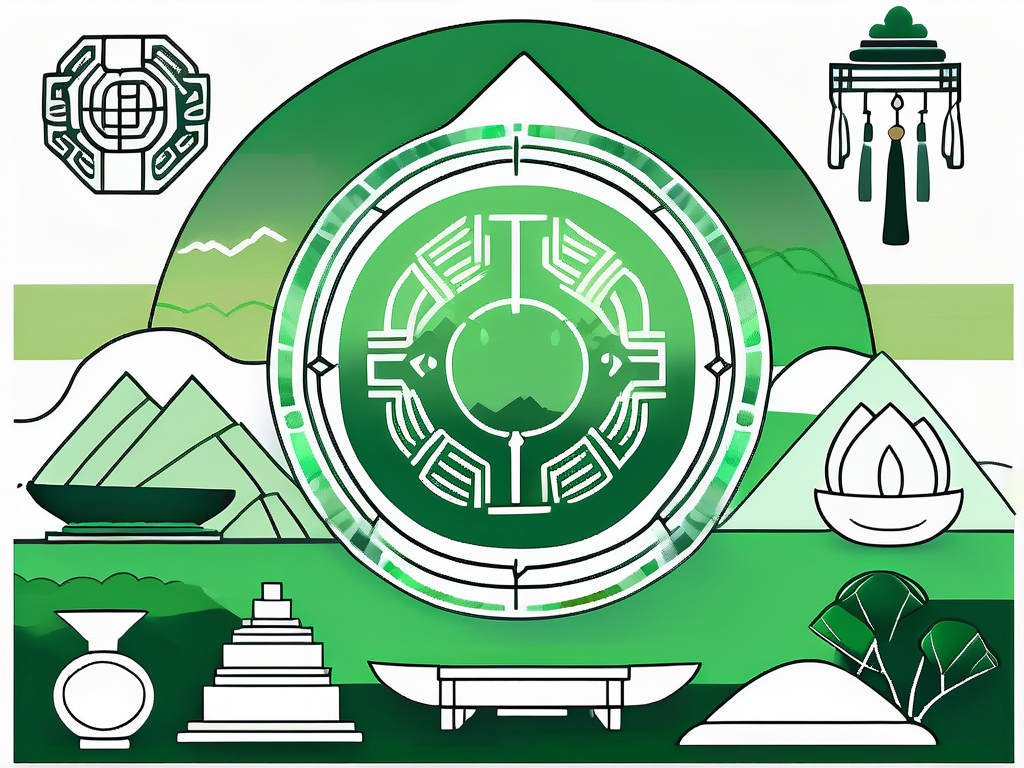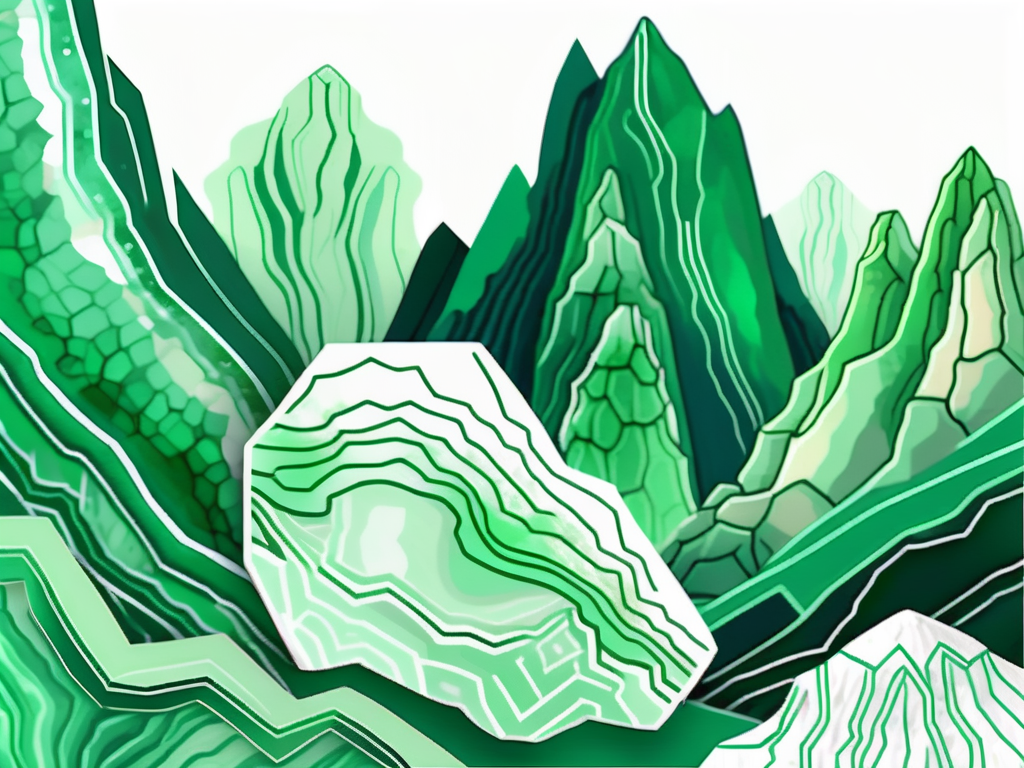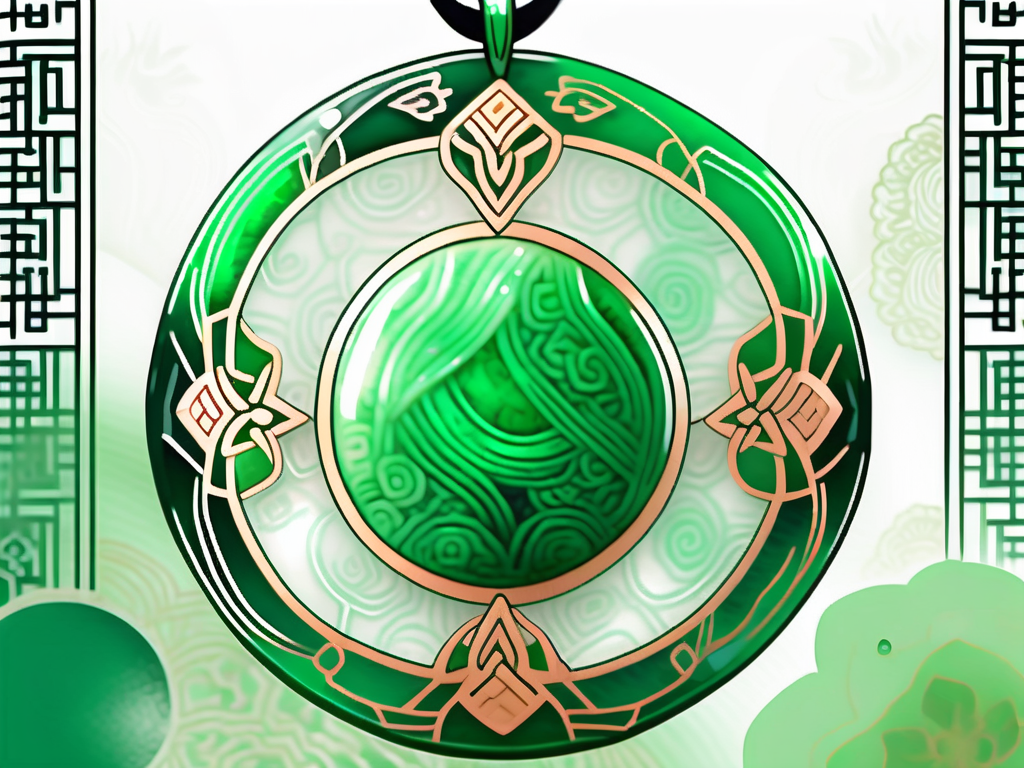Jade is a precious stone that has captivated individuals throughout history with its beauty and significance. This article delves into the various aspects of jade, from its historical significance to its role in different cultures, its geological aspects, and its presence in art and jewelry. By exploring these different facets, we can begin to uncover the true meaning behind jade and its enduring appeal.
The Historical Significance of Jade
Jade holds a rich historical significance that spans across various time periods and civilizations. The allure of jade can be traced back to ancient times, where it was highly valued and revered.
Jade Meaning in Ancient Civilizations
In many ancient civilizations, jade held a profound spiritual and symbolic meaning. Ancient Chinese cultures considered jade to be a symbol of immortality and purity, often associating it with protective qualities. Similarly, civilizations in Mesopotamia and Egypt held jade in high regard, attributing it to power and abundance.
The sophisticated craftsmanship of jade artifacts from these ancient civilizations showcases the importance placed on this precious stone. Carved jade ornaments and burial objects were believed to hold spiritual significance, serving as tokens of spiritual protection and divine connection.
For example, in ancient China, jade burial suits were created for high-ranking individuals to ensure their safe passage into the afterlife. These suits were meticulously crafted with thousands of jade pieces sewn together with gold thread, symbolizing the eternal nature of jade and its connection to the divine.
Jade Meaning in Medieval Times
During the medieval period, jade continued to maintain a significant role in society. In Europe, jade was known as "the stone of heaven" and was believed to have healing properties. It became a popular choice for creating amulets and talismans that were worn for protection and good fortune.
Furthermore, jade was highly valued among royalty and the elite during this time. Its rarity and beauty made it a prized possession, often adorning crowns, scepters, and other regal items.
One notable example is the Imperial Crown of Russia, which featured a large jade cabochon as its centerpiece. This exquisite crown, adorned with diamonds, pearls, and other precious gemstones, symbolized the power and wealth of the Russian Empire.
Modern Interpretations of Jade
As time progressed, the meaning of jade evolved in the modern era. Today, jade continues to be cherished for its beauty and symbolism in various cultures worldwide. Its vibrant green hues and captivating translucency make it a popular choice for jewelry and decorative items.
Modern interpretations of jade often focus on its association with balance, harmony, and wisdom. It is believed to promote emotional well-being and spiritual growth. Jade is also considered a stone of abundance and prosperity, attracting success and good luck into one's life.
In contemporary jewelry design, jade is often combined with other gemstones and metals to create unique and meaningful pieces. The versatility of jade allows for endless possibilities in creating jewelry that resonates with individual styles and preferences.
Furthermore, jade has also found its way into various aspects of modern life beyond jewelry. From architectural accents to home decor, jade is used to add a touch of elegance and serenity to spaces. Its natural beauty and calming energy make it a popular choice for creating a peaceful and harmonious environment.
The Symbolism of Jade in Different Cultures
Jade's significance extends beyond its historical context, as it plays a prominent role in different cultures around the world.

Jade in Chinese Culture
In Chinese culture, jade holds immense symbolism and is regarded as one of the most precious gemstones. Chinese tradition associates jade with virtues such as benevolence, righteousness, and wisdom. The vibrant green color of jade is also associated with growth and renewal.
Throughout Chinese history, jade has been used to create intricate carvings, ceremonial objects, and jewelry. It is often given as a symbol of good fortune and protection, making it a popular gift for special occasions.
One famous example of jade's significance in Chinese culture is the Jade Burial Suit. Dating back to the Han Dynasty, these suits were made entirely of jade and were believed to protect and preserve the body in the afterlife. This practice demonstrates the deep spiritual connection the Chinese people have with jade.
Jade in Maori Tradition
In Maori tradition, jade, known as "pounamu," holds great cultural and spiritual significance. Pounamu is considered a treasure and is handed down through generations. It is believed to connect individuals to their ancestors and the spiritual realm.
Pounamu carvings and jewelry are highly prized among the Maori people, symbolizing strength, prestige, and mana (spiritual power). These ceremonial objects carry stories and legends, passing on cultural knowledge and preserving traditions.
One notable example of pounamu's importance in Maori tradition is the mere pounamu, a traditional weapon made from jade. The mere pounamu is not only a symbol of strength and authority but also a representation of the connection between the physical and spiritual worlds.
Jade in Mesoamerican Cultures
In Mesoamerican cultures such as the Maya and Aztec civilizations, jade was highly revered for its mystical properties. It was considered a sacred stone and played a crucial role in religious rituals and ceremonies.
Mayan jade carvings depicted deities and mythological creatures, symbolizing power and divinity. The intricate craftsmanship of these carvings showcased the skill and artistic expression of the Mayan people. Aztec rulers and warriors adorned themselves with jade jewelry as a symbol of their status and connection with the gods.
One fascinating aspect of jade in Mesoamerican cultures is the belief in its healing properties. It was believed that wearing jade could bring physical and spiritual healing, as well as protection from negative energies. This belief highlights the deep reverence and spiritual significance attached to jade in these ancient civilizations.
Jade Meaning From A Geological Aspects
Understanding the geological aspects of jade helps further unravel its meaning and importance. Let's delve deeper into the fascinating world of jade and explore its formation, composition, varieties, and the locations of its deposits worldwide.

Formation and Composition of Jade
Jade, a gemstone cherished for its beauty and symbolism, is formed through a metamorphic process that occurs deep within the Earth's crust. Over millions of years, under intense pressure and heat, the mineral composition of jade transforms into either nephrite or jadeite. Nephrite, known for its creamy white to dark green color, exudes an elegant simplicity. On the other hand, jadeite showcases a mesmerizing spectrum of hues, including shades of green, lavender, and even red, adding a touch of enchantment to this precious gemstone.
The formation of jade under such extreme conditions contributes to its remarkable toughness and durability. These exceptional properties have made jade a sought-after material for centuries, not only for creating exquisite jewelry but also for crafting weapons, tools, and intricate artistic creations.
Varieties of Jade
While jade is commonly associated with its classic green color, it possesses a captivating range of hues. Jadeite, in particular, dazzles with its versatility, offering a palette that extends beyond the traditional green. From delicate white to ethereal lavender and even mysterious black, jadeite's diverse colors add depth and allure to this precious gemstone.
It is worth noting that, apart from nephrite and jadeite, other related minerals are occasionally referred to as "jade." One such example is serpentine jade, a more affordable alternative that shares some visual similarities with true jade. Additionally, there is chloromelanite, a rare and highly valued black jade that possesses an air of mystery and elegance.
Locations of Jade Deposits Worldwide
Jade deposits can be found in various parts of the world, each with its unique characteristics and significance. Historically, nephrite jade has been sourced from regions such as New Zealand, Siberia, and China. These locations have long been associated with the rich cultural heritage of jade and have contributed to the development of distinct artistic styles and traditions.
On the other hand, jadeite, the rarer and more valuable variety of jade, is primarily found in Myanmar (Burma). Myanmar's jade mines have been a source of fascination for centuries, with their mystical allure and the exquisite jade they yield. However, jadeite can also be found in other parts of the world, such as Guatemala, adding to the global tapestry of this precious gemstone.
The diverse locations where jade is found contribute to the wide range of colors and qualities that make each piece of jade unique. From the vibrant greens of New Zealand nephrite to the captivating lavender hues of Burmese jadeite, the geographical origins of jade play a significant role in its allure and desirability.
Jade Meaning in Art and Jewelry
Jade's beauty and significance have made it a popular choice in the realm of art and jewelry.

Techniques of Carving Jade
The intricate carving of jade requires exceptional skill and precision. Artists use various techniques, such as relief carving and openwork carving, to bring out the stone's natural beauty. Traditional motifs and symbolic designs often inspire these carvings.
Master carvers spend countless hours refining their techniques, ensuring that each piece showcases the inherent elegance of jade. These magnificent carvings serve as art pieces and cultural artifacts, preserving the legacy of jade craftsmanship.
Jade Meaning in Contemporary Jewelry Design
In contemporary jewelry design, jade continues to captivate designers and wearers alike. Its unique allure and cultural significance make it a sought-after gemstone in modern jewelry.
Jade's versatility allows for a wide range of jewelry designs, from sleek and minimalist pieces to bold and ornate creations. Necklaces, pendants, bracelets, and earrings adorned with jade can add a touch of natural elegance to any ensemble.
The Aesthetic Appeal of Jade
Beyond its cultural significance, jade possesses an inherent aesthetic appeal that draws individuals in. The mesmerizing green hues, the smoothness of its surface, and the intertwining patterns within the stone all contribute to the allure of jade.
Whether adorning oneself with a jade jewelry piece or appreciating a carved jade artwork, the beauty of jade has a way of captivating and inspiring all who encounter it.
Uncovering the meaning of jade is a journey of exploration, where history, culture, and nature intertwine to create a stone that holds timeless allure. From its spiritual symbolism to its geological origins, jade continues to be cherished and appreciated for its beauty and significance. Whether as a meaningful gift, a piece of jewelry, or an artistic creation, jade invites us to embrace its enchanting presence and appreciate the mysteries it holds.
As you embrace the enchanting presence of jade and its myriad of meanings, allow Body Mind & Soul to be your guide on this journey. Our carefully curated collection of jade pieces is designed to enhance your healing connections and create the sacred space you desire. From exquisite jewelry that captures the stone's natural beauty to thoughtful gifts and home decor, our selection is a testament to the timeless allure of jade. Visit our expansive Houston location or explore our online store to find the perfect jade item that resonates with your spirit. Shop Jade Now and let the mysteries of this ancient stone unfold in your life.

